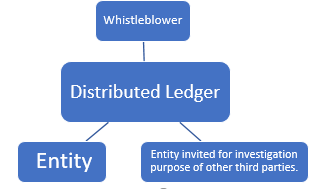
Introduction[1]
The Bankruptcy Code[2] contains a number of so-called ipso facto provisions that invalidate contractual provisions triggered by the bankruptcy filing or insolvency of the debtor.[3] Moreover, even where one of the ipso facto provisions is not applicable, courts have long held that it is contrary to federal public policy for a debtor to waive its right to seek relief under, or the protections set forth in, the Bankruptcy Code. Indeed, provisions prohibiting debtors from availing themselves of the bankruptcy laws—laws so seminally important that they were specifically authorized under the Constitution—are almost always deemed unenforceable.[4]
Bankruptcy law is equally clear, however, that state corporate law and corporate formalities govern the process for determining whether a bankruptcy filing was duly authorized. Given that limited liability companies are “primarily creatures of contract,” state law strongly favors enforcement of provisions in operating agreements and other governing documents.[5] As such, and as demonstrated by the cases discussed in this article, provisions contained in limited liability company governing documents that set limitations on the company’s ability to file a bankruptcy case raise challenging issues for judges and practitioners alike.
Seizing on this, lenders in recent years have become more creative in seeking to reduce or eliminate their bankruptcy risk. A common approach is to create what effectively becomes a bankruptcy-remote limited liability company by obtaining, either directly or through a nominee, a so-called golden share or membership interest in their borrower. Contemporaneously, the lender insists that its borrower incorporate various blocking provisions into their operating agreement such that it can utilize a bankruptcy approval requirement to effectively preclude a bankruptcy filing. As described by one bankruptcy court, this strategy was recently “created by the credit community in an attempt to work around the prohibition against an entity contracting away the right to file bankruptcy.”[6]
This is an article in two parts. Part one will discuss the applicable law regarding eligibility to file generally, case law prohibiting advance bankruptcy waivers, and case law where courts have nevertheless held that operating agreement provisions setting limits on the authority of members or managers to file a bankruptcy case are generally enforced. Part two will discuss the recent string of cases dealing with so-called golden share provisions and how courts have dealt with the difficult issue of blocking provisions in favor of creditors set forth in limited liability company operating agreements.
Eligibility to File Generally
Section 109(a) permits any “person” to file a bankruptcy petition,[7] and the statute defines “person” to include individuals, partnerships, and corporations.[8] The term “corporation” is defined in the Bankruptcy Code to include a “partnership association organized under a law that makes only the capital subscribed responsible for the debts of such association” and an “unincorporated company or association.”[9] It is now generally acknowledged that a limited liability company is a “corporation” for bankruptcy eligibility purposes and therefore is a “person” eligible for relief under the Bankruptcy Code.[10]
Advance Bankruptcy Waivers Are Unenforceable as a Matter of Federal Public Policy
Courts almost universally agree that the right to file a petition in bankruptcy is fundamental and cannot be waived. This antiwaiver principle is not found anywhere in the Bankruptcy Code. Rather, it has long been the law that agreements promising not to file for bankruptcy or prospectively waiving substantive bankruptcy rights are unenforceable because of the strong public policy favoring access to bankruptcy relief.
In one early case, In re Weitzen,[11] the District Court for the Southern District of New York held that a contractual agreement to waive the benefit of bankruptcy is unenforceable. “To sustain a contractual obligation of this character,” the court explained, “would frustrate the object of the Bankruptcy Act. . . .” In Fallick v. Kehr,[12] the Second Circuit Court of Appeals noted in dictum that advance agreements to waive the benefits of bankruptcy are void. Similarly, in In re Gulf Beach Dev. Corp.,[13] the Bankruptcy Court for the Middle District of Florida held “the Debtor cannot be precluded from exercising its right to file Bankruptcy and any contractual provision to the contrary is unenforceable as a matter of law.”
Given that the Bankruptcy Code does not have any provisions directly on point, courts frequently rely on public-policy grounds for denying bankruptcy waivers. For example, in In re Huang,[14] the Ninth Circuit Court of Appeals noted: “It is against public policy for a debtor to waive the . . . protection[s] of the Bankruptcy Code.” Similarly, in In re Tru Block Concrete Prods., Inc.,[15] the Bankruptcy Court for the Southern District of California noted: “It is a well settled principal that an advance agreement to waive the benefits conferred by the bankruptcy laws is wholly void as against public policy.” In addition, in In re Madison,[16] the Bankruptcy Court for the Eastern District of Pennsylvania held that a prepetition agreement to waive a debtor’s right to file further bankruptcies within 180 days from the filing of the debtor’s last bankruptcy petition was unenforceable because it violated public policy.
Courts frequently have a similarly harsh reaction to prebankruptcy agreements that waive specific benefits of bankruptcy, such as the automatic stay or the right to a discharge. In In re Shady Grove Tech Ctr. Assocs. L.P.,[17] the Bankruptcy Court for the District of Maryland held: “self-executing clauses in pre-petition agreements purporting to provide that no automatic stay arises in a bankruptcy case are contrary to law and hence unenforceable, and . . . self-executing clauses in prepetition agreements . . . to vacate the automatic stay are likewise unenforceable.” Similarly, in In re Pease,[18] the Bankruptcy Court for the District of Nebraska held: “I conclude that any attempt by a creditor in a private pre-bankruptcy agreement to opt out of the collective consequences of a debtor’s future bankruptcy filing is generally unenforceable. The Bankruptcy Code pre-empts the private right to contract around its essential provisions, such [as] those found in 11 U.S.C. § 362.” Finally, in In re Cole,[19] the Bankruptcy Appellate Panel for the Ninth Circuit held: “a state court stipulated judgment where the debtor waives his right to discharge is unenforceable as against public policy.”
Underlying all of these holdings is the concept that business bankruptcy reorganization laws further the economic policy of preserving viable operating entities not only for the benefit of their owners, but also for their customers, suppliers, employees, and society as a whole. If advance bankruptcy waivers were enforceable, the logical result would be that such waivers would become commonplace in all loan agreements.[20] The effect would be to effectively close the doors of the bankruptcy courts to all parties who do business with sophisticated lenders. The negative consequences of such a result to the national economy and local communities could be substantial.
Operating Agreement Provisions Setting Limits on the Authority of Members or Managers to File a Bankruptcy Case Are Generally Enforced
Notwithstanding the foregoing, operating agreement provisions that set limits on the authority of members or managers of a limited liability company to file a bankruptcy case are generally enforced. Courts enforcing such provisions make a distinction between waivers of the right to file bankruptcy, and members voluntarily agreeing among themselves that authority to file a bankruptcy shall not exist absent satisfaction of certain conditions precedent.
State law determines who has the legal right to sign and file a bankruptcy petition on behalf of an entity. In fact, the U.S. Supreme Court has determined that “[t]he authority to file a bankruptcy petition must be found in the corporation’s instruments and in applicable state law.”[21] As such, courts have held that a bankruptcy case filed on behalf of an entity by one without requisite authority under state law is improper and must be dismissed for, among other reasons, lack of jurisdiction.[22]
State limited liability company statutes generally do not expressly prescribe whether members or managers have the power to file a bankruptcy petition. As such, the authority determination almost always requires an analysis of the terms of the limited liability company’s operating agreement.[23] Limited liability companies are “primarily creatures of contract.”[24] Therefore, great deference is given to provisions contained in operating agreements and other governing documents agreed upon by the members.
Given this great deference, it has been determined that “the long-standing policy against contracting away bankruptcy benefits is not necessarily controlling when what defeats the rights in question is a corporate control document.”[25] Provisions in limited liability company operating agreements that require certain approvals or unanimous consent by managers or members before filing a bankruptcy petition are frequently enforced. For example, in In re Avalon Hotel Partners, LLC,[26] the limited liability company operating agreement required 75-percent member approval for certain “major decisions.” Although bankruptcy was not specifically listed as an event triggering the “major decision” clause, the bankruptcy court easily reached the conclusion that a bankruptcy filing fell within the scope of that provision and, thus, imposed the 75-percent requirement.[27]
When the contractual provision at issue gives lenders an explicit voice in the filing of a bankruptcy petition, the analysis becomes far more complex. Nevertheless, as highlighted by the two cases discussed below, where a lender is acting in its capacity as a member, as opposed to a creditor, such provisions may well be enforced.
In re Global Ship Systems, LLC. In In re Global Ship Systems,[28] the debtor’s operating agreement established a lender as a “Class B Shareholder.” The Class B Shareholder interest consisted of approximately 20 percent of the equity of the company. The debtor’s operating agreement provided that the filing of a voluntary bankruptcy by the limited liability company required the consent of the Class B Shareholder. The lender would not consent to a filing. Therefore, in order to avoid the consent requirement under the operating agreement, the debtor solicited the filing of an involuntary bankruptcy case that it then failed to contest.
The court concluded that the end-run around the lender’s contractual rights as a member was inappropriate and dismissed the case. The court noted: “The fact is that the petitioning creditors’ participation in this case was solicited by the Debtor which was prohibited by the Operating Agreement from filing a voluntary case without [lender’s] consent.”[29] Further noting that the lender was both a creditor and an equity holder, the court found that the lender:
Was granted certain protections in the governance of the LLC. [The debtor] could not sell substantially all of its assets, merge with another company, or file a voluntary bankruptcy case without the consent of [lender]. An absolute waiver of the right to file bankruptcy is violative of public policy if asserted by a lender. However, since [the lender] wears two hats in this case, as a Class B shareholder, it has the unquestioned right to prevent, by withholding consent, a voluntary bankruptcy case.”[30]
Citing various provisions of the Georgia limited liability company statute, the court found that state law permits “to the maximum extent possible, parties to exercise freedom of contract in the structuring of LLCs.”[31] To accord state law’s legislative determination that limited liability companies “should be granted extremely broad discretion in the organization and management of their affairs,” the court concluded that the lender retained a separate, enforceable right, as an equity holder, to refuse to consent to the filing of a voluntary bankruptcy case.[32] Given that the involuntary case was commenced in violation of such right, and in light of other facts unfavorable to the debtor, the case was dismissed as being filed in bad faith.
In re DB Capital Holdings, LLC. In In re DB Capital Holdings,[33] the debtor was a manager-managed limited liability company that was created to develop and sell a luxury condominium project in Aspen, Colorado. The debtor had two members, Aspen and DB Development. The manager had no ownership interest in the debtor but was an affiliate of DB Development.
Under the operating agreement, the rights and powers given to the manager pertained only to managing the affairs of the debtor in the ordinary course of business. The members of the debtor subsequently attempted to strip the company of its ability to file a bankruptcy petition by amending its operating agreement to include a provision that the company: “will not institute proceedings to be adjudicated bankrupt or insolvent; or consent to the institution of bankruptcy or insolvency proceedings against it; or file a petition seeking, or consent to, reorganization or relief under any applicable federal or state law relating to bankruptcy.”[34]
A few years later, the manager of the debtor filed a voluntary bankruptcy petition on the debtor’s behalf for purposes of defeating a state court receivership commenced by the debtor’s mortgage lender.[35] Aspen did not consent to the filing and sought to dismiss it as unauthorized based on the provision in the debtor’s operating agreement. The manager argued that such a provision should be invalidated on public-policy grounds because the provision was included at the lender’s behest. The bankruptcy court disagreed and dismissed the case.
The Tenth Circuit affirmed on appeal, concluding that the express terms of the operating agreement could prohibit the limited liability from seeking bankruptcy relief. The court rejected the manager’s argument that the antibankruptcy provisions in the operating agreement were void as a matter of public policy, noting that he had not cited any support for the proposition that members of a limited liability company cannot agree among themselves not to file bankruptcy.[36] The court declined to address the manager’s argument that the provision was a product of coercion by the debtor’s secured creditor, and therefore unenforceable, because the evidentiary record did not support such an allegation.
Finally, the court concluded that even if it had disregarded the express prohibition against a bankruptcy filing, such a filing on behalf of the limited liability company was outside the scope of the manager’s authorized duties as set forth in the operating agreement. Under the operating agreement, the manager was only authorized to operate the debtor in the ordinary course of business. The filing of a chapter 11 proceeding, the court found, “represents a radical departure from how any entity carries on its business outside of bankruptcy.”[37] Accordingly, because the members were entitled to, and in fact did, agree among themselves to preclude the manager from filing bankruptcy, and because there was no evidence that such provision was inserted at the insistence of the lender, the appellate panel held that the filing was unauthorized, and therefore affirmed the bankruptcy court’s decision to dismiss the case.
Conclusion
All of the cases discussed above begin with the general premise that waiving or contracting away the right to file for relief under the Bankruptcy Code is contrary to public policy. Nevertheless, as the case law has developed over the years, a number of courts have held that operating agreement provisions that set limits on the authority of members or managers of a limited liability company to file a bankruptcy case are enforceable. The secured lending community has taken note of this, and creative lenders in recent years have structured or characterized their loan transactions to include an equity component, which arguably would give them the power to control its borrower’s fate with respect to its ability to commence a bankruptcy case. Part two of this article will address how courts have dealt with these extremely difficult cases.
[1] Jaffe Raitt Heuer & Weiss, P.C., [email protected].
[2] The Bankruptcy Code is set forth in 11 U.S.C. § 101 et seq. Specific sections of the Bankruptcy Code are identified as “section __.” Similarly, specific sections of the Federal Rules of Bankruptcy Procedure are identified as “Bankruptcy Rule __.”
[3] See e.g., 11 U.S.C. § 365(b)(2)(B) (“Paragraph (1) of this subsection [dealing with contract defaults] does not apply to a default that is a breach of a provision relating to . . . the commencement of a case under this title. . . .”); 11 U.S.C. § 365(e)(1)(B) (“Notwithstanding a provision in an executory contract or unexpired lease, or in applicable law, an executory contract or unexpired lease of the debtor may not be terminated or modified . . . at any time after the commencement of the case solely because of a provision in such contract or lease that is conditioned on . . . the commencement of a case under this title.”); 11 U.S.C. § 541(c) (“An interest of the debtor in property becomes property of the estate . . . notwithstanding any provision in an agreement, transfer instrument, or applicable nonbankruptcy law . . . that is conditioned on the insolvency or financial condition of the debtor, [or] on the commencement of a case under this title. . . .”).
[4] See In re Gen. Growth Props., Inc., 409 B.R. 43, 49 (Bankr. S.D.N.Y. 2009).
[5] Stanziale v. Versa Capital Management (In re Simplexity, LLC), 2017 WL 2385404 (Bankr. D. Del. June 1, 2017) (citing TravelCenters of Am., LLC v. Brog, 2008 WL 1746987, at *1 (Del. Ch. Apr. 3, 2008) (finding that under Delaware law, “limited liability companies are creatures of contract” and, thus, drafters enjoy broad freedom in creating bylaws); In re Grupo Dos Chiles, LLC, 2006 WL 668443, at *2 (Del. Ch. Mar. 10, 2006) (“Limited liability companies are designed to afford the maximum amount of freedom of contract, private ordering and flexibility to the parties involved”).
[6] In re Franchise Services of N. Am., 2018 WL 485959 (Bankr. S.D. Miss. Jan. 17, 2018).
[7] 11 U.S.C. § 109(a) (“Notwithstanding any other provision of this section, only a person that resides or has a domicile, a place of business, or property in the United States, or a municipality, may be a debtor under this title.”).
[8] 11 U.S.C. § 101(41).
[9] 11 U.S.C. § 101(9)(A).
[10] 2 Collier on Bankruptcy (16th ed. rev. 2009) ¶ 109.02[1][b], at 109–11 (citing In re ICLNDS Notes Acquisition, LLC, 259 B.R. 289 (Bankr. N.D. Ohio 2001) and Gilliam v. Speier (In re KRSM Props.), 318 B.R. 712 (B.A.P. 9th Cir. 2004)).
[11] In re Weitzen, 3 F. Supp. 698 (S.D.N.Y. 1933).
[12] Fallick v. Kehr, 369 F.2d 899, 904 (2d Cir. 1966).
[13] In re Gulf Beach Dev. Corp., 48 B.R. 40, 43 (Bankr. M.D. Fla. 1985).
[14] Bank of China v. Huang (In re Huang), 275 F.3d 1173 (9th Cir. 2002).
[15] In re Tru Block Concrete Prods., Inc., 27 B.R. 486, 492 (Bankr. S.D. Cal. 1983).
[16] In re Madison, 184 B.R. 686, 690 (Bankr. E.D. Pa. 1995).
[17] In re Shady Grove Tech Ctr. Assocs. L.P., 216 B.R. 386, 390 (Bankr. D. Md.1998).
[18] In re Pease, 195 B.R. 431, 435 (Bankr. D. Neb. 1996).
[19] Hayhoe v. Cole (In re Cole), 226 B.R. 647, 651–52 n.7 (9th Cir. B.A.P. 1998).
[20] See, e.g., Continental Ins. Co. v. Thorpe Insulation Co. (In re Thorpe Insulation Co.), 671 F.3d 1011, 1026 (9th Cir. 2012) (“This prohibition of prepetition waiver has to be the law; otherwise, astute creditors would routinely require their debtors to waive.”).
[21] Price v. Gurney, 342 U.S. 100, 106 (1945).
[22] See, e.g., Hager v. Gibson (In re Hager), 108 F.3d 35, 38–39 (4th Cir. 1997) (holding that the bankruptcy court does not acquire jurisdiction over a petitioning corporation if those purporting to act for the corporation lack authority under local law).
[23] See e.g., In re Real Homes, LLC, 352 B.R. 221, 225 (Bankr. D. Idaho 2005); In re Farner, Boring & Tunneling, Inc., 26 B.R. 29, 31 (Bankr. D. Tenn. 1982).
[24] Stanziale v. Versa Capital Management (In re Simplexity, LLC), 2017 WL 2385404 (Bankr. D. Del. June 1, 2017) (citing TravelCenters of Am., LLC v. Brog, 2008 WL 1746987, at *1 (Del. Ch. Apr. 3, 2008) (finding that under Delaware law, “limited liability companies are creatures of contract” and, thus, drafters enjoy broad freedom in creating bylaws)); In re Grupo Dos Chiles, LLC, 2006 WL 668443, at *2 (Del. Ch. Mar. 10, 2006) (“Limited liability companies are designed to afford the maximum amount of freedom of contract, private ordering and flexibility to the parties involved”).
[25] Klingman v. Levinson, 831 F.2d 1292, 1296 (7th Cir. 1987).
[26] In re Avalon Hotel Partners, LLC, 302 B.R. 377 (Bankr. D. Or. 2003).
[27] See also In re Orchard at Hansen Park, LLC, 347 B.R. 822 (Bankr. N.D. Tex. 2006) (enforcing operating agreement that required unanimous member consent for the filing of a voluntary bankruptcy case); In re 210 West Liberty Holdings, LLC, 2009 WL 1522047 (Bankr. N.D. W.Va. May 29, 2009) (provision that “all decisions” be made by majority vote was sufficient to allow bankruptcy filing over member objection because the objecting member’s approval was not necessary to constitute a majority); In re Ice Oasis, LLC, 2008 WL 5753355 (Bankr. N.D. Cal. Nov. 7, 2008) (in two-member LLC with 50/50 ownership, both members were required to approve the bankruptcy filing because the operating agreement provided for “all decisions” to be approved by a majority).
[28] In re Global Ship Systems, LLC, 391 B.R. 193 (Bankr. S.D. Ga. 2007).
[29] Id. at 202.
[30] Id. at 203 (internal citations omitted) (emphasis added).
[31] Id. at 204.
[32] Id.
[33] In re DB Capital Holdings, LLC, 463 B.R. 142 (B.A.P. 10th Cir. 2010).
[34] Id. at *2.
[35] Id. at *1.
[36] Id. at *3.
[37] Id. at *4–*5 (citing In re Avalon Hotel Partners, LLC, 302 B.R. 377 (Bankr. D. Or. 2003)).












